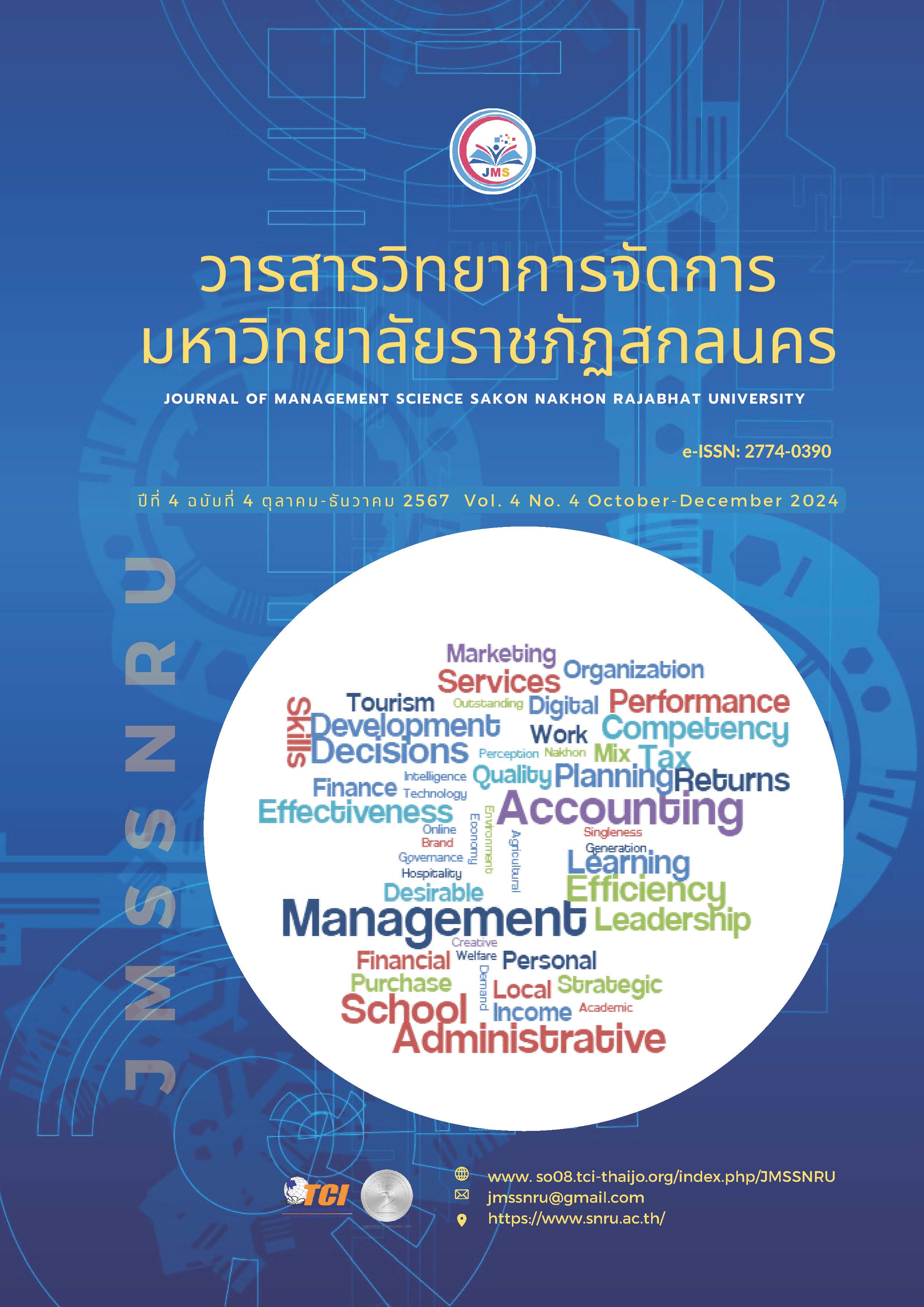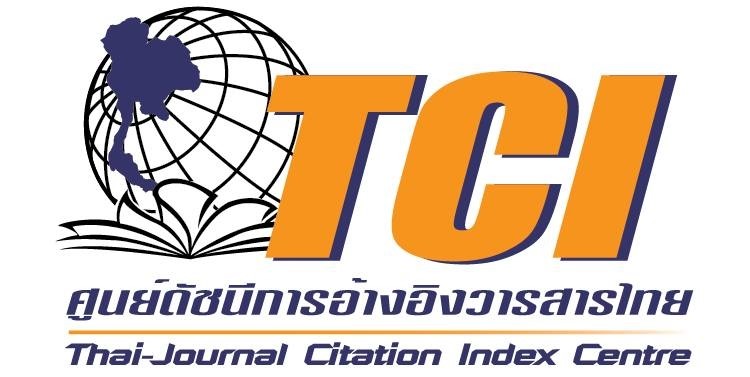ความก้าวหน้าและการประยุกต์การเรียนรู้แบบผสมผสาน
คำสำคัญ:
ความก้าวหน้า, การประยุกต์, การเรียนรู้แบบผสมผสานบทคัดย่อ
การเรียนรู้แบบผสมผสานมีบทบาทสำคัญในการศึกษาสมัยใหม่โดยนำเสนอความยืดหยุ่น การเข้าถึงได้ และประสบการณ์การเรียนรู้ส่วนบุคคลที่ตอบสนองความต้องการที่หลากหลายของผู้เรียน ด้วยการรวมการสอน แบบดั้งเดิมเข้ากับเทคโนโลยีดิจิทัล การเรียนรู้แบบผสมผสานช่วยเพิ่มผลลัพธ์การเรียนรู้ ส่งเสริมการมีส่วนร่วม และเตรียมนักเรียนให้มีทักษะที่จำเป็นเพื่อความสำเร็จในโลกดิจิทัลปัจจุบัน ดังนั้น บทความนี้ใช้การวิจัยเอกสารมีวัตถุประสงค์เพื่อนำเสนอภาพรวมที่ครอบคลุมเกี่ยวกับความก้าวหน้าและการประยุกต์การเรียนรู้แบบผสมผสาน โดยนำเสนอวิวัฒนาการจากการทดลองใหม่ ๆ สู่แนวทางการศึกษาที่แพร่หลาย ความยืดหยุ่น การปรับตัว และความสามารถในการเรียนรู้แบบผสมผสานของการเรียนรู้แบบผสมผสานเพื่อตอบสนองความต้องการที่หลากหลายของผู้เรียนทำให้การเรียนรู้แบบผสมผสานกลายเป็นรากฐานสำคัญของการศึกษาร่วมสมัย ด้วยการบูรณาการรูปแบบออนไลน์และแบบเห็นหน้ากัน การเรียนรู้แบบผสมผสานนำเสนอประสบการณ์การเรียนรู้แบบพลวัตรและมีส่วนร่วม โดยได้รับการสนับสนุนจากกรอบทางทฤษฎี นวัตกรรมทางเทคโนโลยี และกลยุทธ์การสอน เมื่อเรามองไปสู่อนาคต การวิจัยอย่างต่อเนื่อง นวัตกรรม และการทำงานร่วมกันจะมีความสำคัญอย่างยิ่งในการควบคุมศักยภาพของ การเรียนรู้แบบผสมผสานอย่างเต็มที่ เพื่อตอบสนองความต้องการที่เปลี่ยนแปลงไปของผู้เรียนในยุคดิจิทัล
เอกสารอ้างอิง
Bergmann, J., & Sams, A. (2012). Flip your classroom: Reach every student in every class every day. Washington DC: International Society for Technology in Education.
Bonk, C. J., & Graham, C. R. (Eds.). (2012). The handbook of blended learning: Global perspectives, local designs. New Jersey: John Wiley & Sons.
Christensen, C., & Horn, M. B. (2013). How do we transform our schools? In M. B. Horn & H. Staker (Eds.), Blended: Using disruptive innovation to improve schools (pp. 19-30). San Francisco: Jossey-Bass.
Driscoll, M. (2002). Blended learning: Let's get beyond the hype. E-learning, 1(4), 1-4.
Dziuban, C., Hartman, J., & Moskal, P. (2004). Blended learning. EDUCAUSE Center for Applied Research Bulletin, 7, 1-12.
Garrison, D. R., & Vaughan, N. D. (2008). Blended learning in higher education: Framework, principles, and guidelines. New Jersey: John Wiley & Sons.
Garrison, D. R., & Kanuka, H. (2004). Blended learning: Uncovering its transformative potential in higher education. The Internet and Higher Education, 7(2), 95-105.
Garrison, D. R., & Vaughan, N.D. (2008). Blended learning in higher education: Framework, principles, and guidelines. New Jersey: John Wiley & Sons.
Graham, C. R., Woodfield, W., & Harrison, J. B. (2013). A framework for institutional adoption and implementation of blended learning in higher education. Internet and Higher Education, 18, 4-14.
Graham, C.R. (2006). Blended learning systems: Definition, current trends, and future directions. In C.J. Bonk & C.R. Graham (Eds.), Handbook of blended learning: Global perspectives, local designs (pp. 3-21). New Jersey: John Wiley & Sons.
Graham, C.R. (2019). The future of blended learning: Why blended learning will become the dominant model in education. New York: Routledge.
Graham, C. R., Woodfield, W., & Harrison, J.B. (2013). A framework for institutional adoption and implementation of blended learning in higher education. Internet and Higher Education, 18, 4-14.
Horn, M.B., & Staker, H. (2015). Blended: Using disruptive innovation to improve schools. New Jersey: John Wiley & Sons.
Jonassen, D.H. (1999). Designing constructivist learning environments. In C. M. Reigeluth (Ed.), Instructional-design theories and models: A new paradigm of instructional theory (Vol. 2, pp. 215-239). New York: Routledge Taylor & Francis Group.
Larmer, J., Mergendoller, J., & Boss, S. (2015). Setting the standard for project-based learning: A proven approach to rigorous classroom instruction. Virginia: ASCD.
Means, B., Toyama, Y., Murphy, R., Bakia, M., & Jones, K. (2010). Evaluation of evidence-based practices in online learning: A meta-analysis and review of online learning studies. US Department of Education.
Means, B., Toyama, Y., Murphy, R., Bakia, M., & Jones, K. (2013). Evaluation of evidence-based practices in online learning: A meta-analysis and review of online learning studies. US Department of Education.
Oliver, M., & Trigwell, K. (2005). Can ‘blended learning’ be redeemed? E-Learning, 2(1), 17-26.
Picciano, A.G. (2009). Blending with purpose: The multimodal model. Journal of Asynchronous Learning Networks, 13(1), 7-18.
Prince, M. (2004). Does active learning work? A review of the research. Journal of Engineering Education, 93(3), 223-231.
Savery, J. R. (2006). Overview of problem-based learning: Definitions and distinctions. Interdisciplinary Journal of Problem-based Learning, 1(1), 3-10.
Siemens, G. (2005). Connectivism: A learning theory for the digital age. International Journal of Instructional Technology and Distance Learning, 2(1), 3-10.
Tucker, B. (2012). The flipped classroom. Education Next, 12(1), 82-83.
Vaughan, N. D. (2014). Blended learning. In M. A. Peters (Ed.), Encyclopedia of Educational Philosophy and Theory (pp. 1-5). New York: Springer.
Vaughan, N.D., Cleveland-Innes, M., & Garrison, D.R. (2013). Teaching in blended learning environments: Creating and sustaining communities of inquiry. Athabasca University Press.
Vygotsky, L. S. (1978). Mind in society: The development of higher psychological processes. Harvard University Press.
ดาวน์โหลด
เผยแพร่แล้ว
รูปแบบการอ้างอิง
ฉบับ
ประเภทบทความ
สัญญาอนุญาต
ลิขสิทธิ์ (c) 2024 วารสารวิทยาการจัดการ มหาวิทยาลัยราชภัฏสกลนคร

อนุญาตภายใต้เงื่อนไข Creative Commons Attribution-NonCommercial 4.0 International License.
บทความที่ตีพิมพ์ในวารสารวิทยาการจัดการ มหาวิทยาลัยราชภัฏสกลนคร เป็นทัศนะ ลิขสิทธิ์ และความรับผิดชอบของผู้เขียนเจ้าของผลงาน






